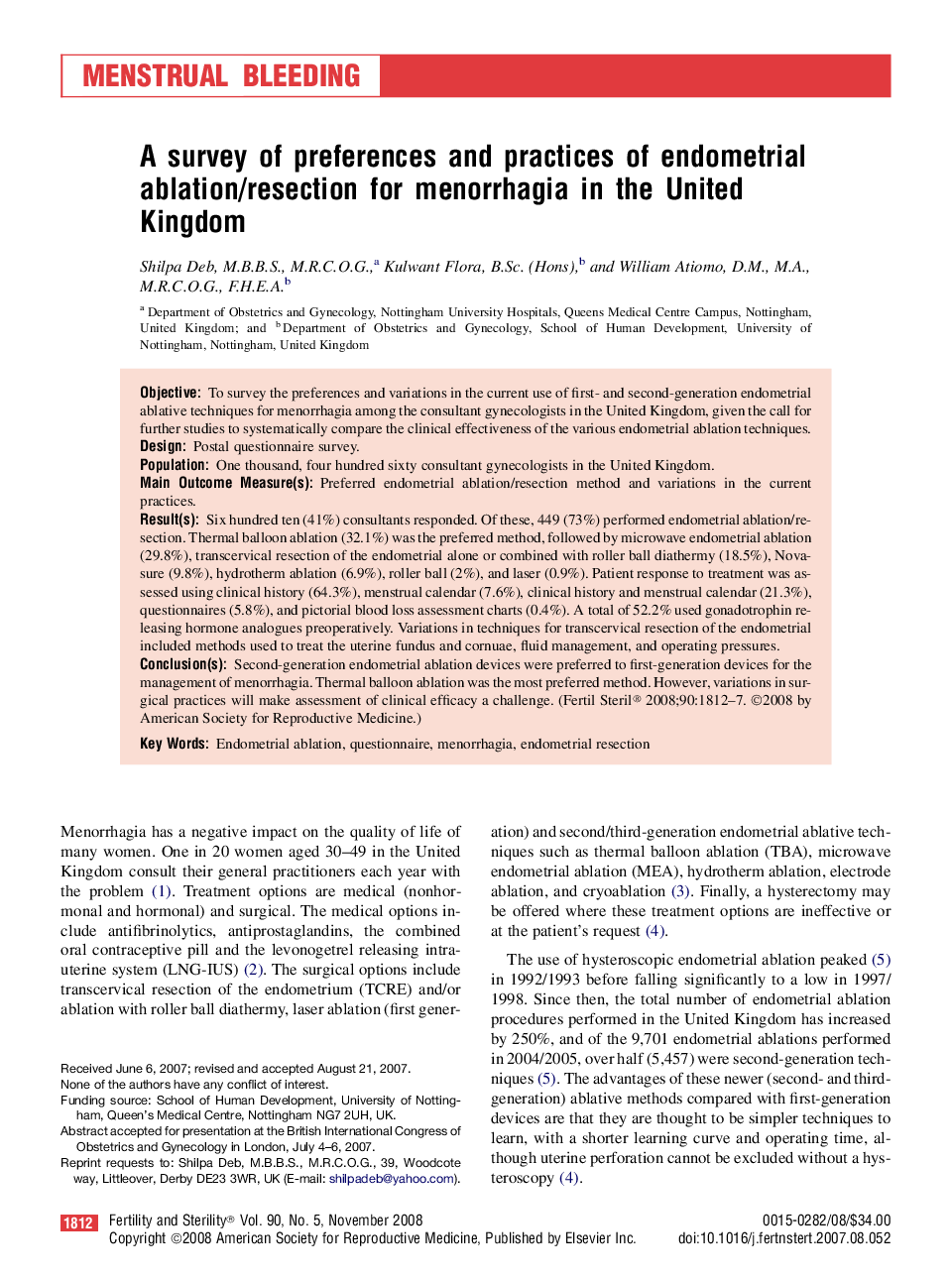| Article ID | Journal | Published Year | Pages | File Type |
|---|---|---|---|---|
| 3941626 | Fertility and Sterility | 2008 | 6 Pages |
ObjectiveTo survey the preferences and variations in the current use of first- and second-generation endometrial ablative techniques for menorrhagia among the consultant gynecologists in the United Kingdom, given the call for further studies to systematically compare the clinical effectiveness of the various endometrial ablation techniques.DesignPostal questionnaire survey.PopulationOne thousand, four hundred sixty consultant gynecologists in the United Kingdom.Main Outcome Measure(s)Preferred endometrial ablation/resection method and variations in the current practices.Result(s)Six hundred ten (41%) consultants responded. Of these, 449 (73%) performed endometrial ablation/resection. Thermal balloon ablation (32.1%) was the preferred method, followed by microwave endometrial ablation (29.8%), transcervical resection of the endometrial alone or combined with roller ball diathermy (18.5%), Novasure (9.8%), hydrotherm ablation (6.9%), roller ball (2%), and laser (0.9%). Patient response to treatment was assessed using clinical history (64.3%), menstrual calendar (7.6%), clinical history and menstrual calendar (21.3%), questionnaires (5.8%), and pictorial blood loss assessment charts (0.4%). A total of 52.2% used gonadotrophin releasing hormone analogues preoperatively. Variations in techniques for transcervical resection of the endometrial included methods used to treat the uterine fundus and cornuae, fluid management, and operating pressures.Conclusion(s)Second-generation endometrial ablation devices were preferred to first-generation devices for the management of menorrhagia. Thermal balloon ablation was the most preferred method. However, variations in surgical practices will make assessment of clinical efficacy a challenge.
